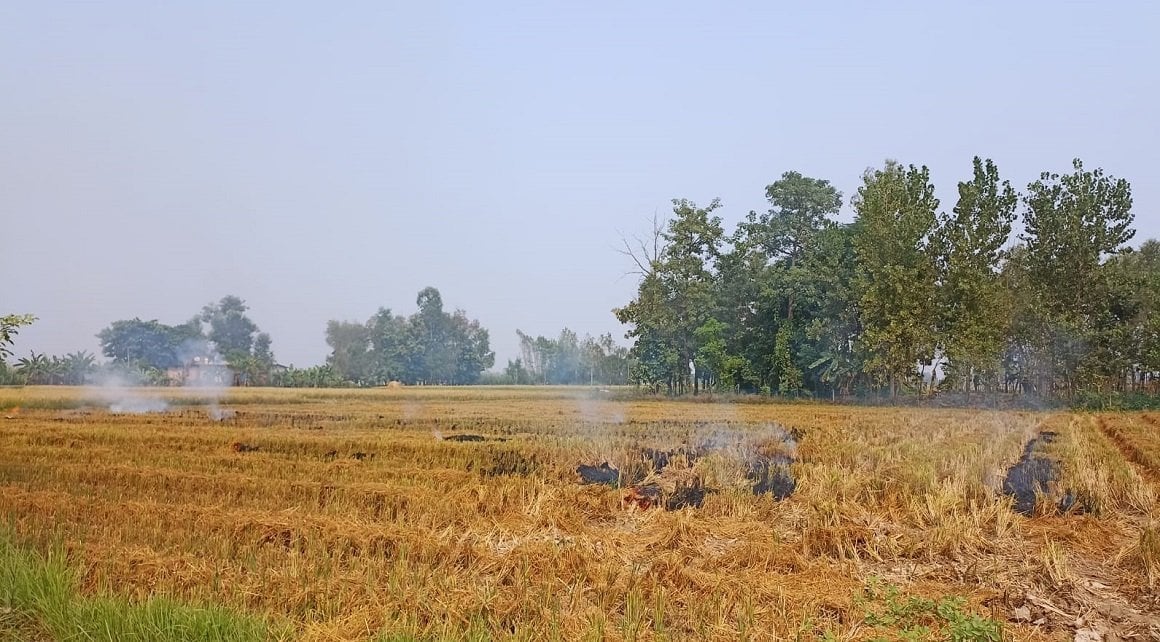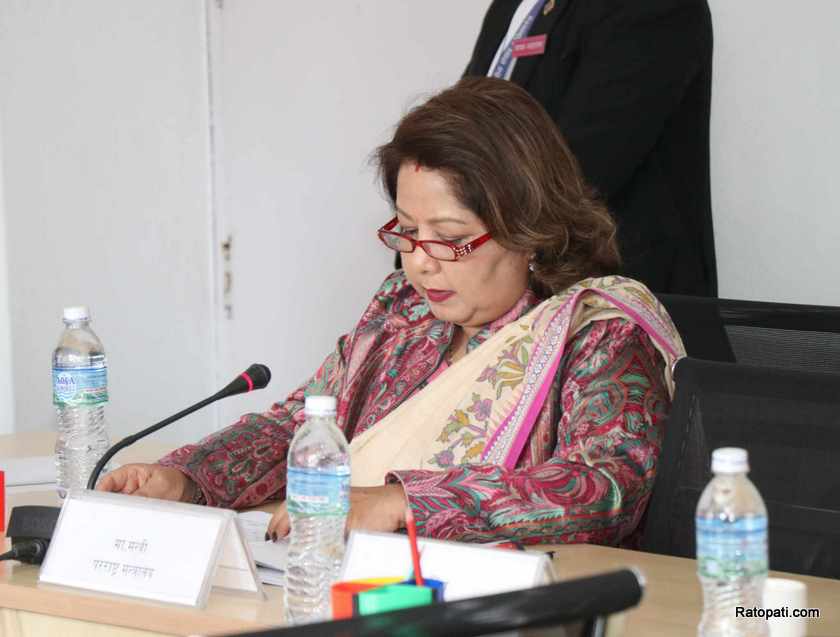Air pollution in Nepal surges with onset of cold weather

Kathmandu, November 7 — With the onset of the cold season every year, the problem of air pollution begins to surface across Nepal. As the cold increases, people resort to burning not only wood and firewood but also plastic and tires to stay warm. The smoke produced from burning such materials contributes to the rising levels of air pollution.
According to air quality expert Dr. Bhupendra Das, sources of air pollution include vehicles, industries, and construction activities. "Delhi in India and Lahore in Pakistan are among the cities with the highest levels of air pollution in the world," he said. "Nepal is also beginning to face this problem. The burning of crop residues, including straw and garbage, increases pollution."
Dr. Das pointed out that the period from November to April sees nearly six months of air pollution risk in Nepal. He added that approximately 3 million metric tons of agricultural residue are burned annually in Nepal, contributing significantly to air pollution.
"Annually, about 3 million metric tons of agricultural residues are burned," he explained. "This is based on my own study. Currently, it is harvest season, and after harvesting rice, farmers burn the straw in the fields to quickly prepare for planting wheat, which contributes to pollution."
Similarly, Dr. Das highlighted that during the dry season, forest fires also contribute to increasing pollution levels.
Local action needed to curb air pollution
To combat air pollution, local governments must take proactive steps. The increasing mechanization in agriculture has led to a rise in the practice of burning agricultural residues.
The Nepal Agricultural Research Council (NARC) has also urged farmers not to burn straw. The use of combine harvesters leaves straw in the fields, and burning it harms the soil and environment while also affecting animal feed. NARC has encouraged farmers to collect the straw using baling machines or other methods instead of burning it.
In the Terai region, where combine harvesters are commonly used for harvesting crops like rice and wheat, the leftover stalks in the fields are often burned, releasing smoke that worsens air pollution. Local authorities need to raise awareness about not setting fire to fields, Dr. Das suggested.
Dr. Das stresses the importance of individual efforts
According to Dipak Gyawali, Senior Divisional Chemist and Information Officer at the Department of Environment, addressing air pollution requires efforts from both the government and individuals. He recommended that people avoid burning trash, plastic, and leaves, and instead use electric stoves, environmentally friendly vehicles, and regularly maintain their vehicles to reduce pollution.
Health effects of air pollution
Air quality in places like the Kathmandu Valley and Biratnagar often reaches hazardous levels. Health experts note that exposure to such polluted air can lead to throat irritation, coughing, respiratory problems, and other health issues.
Dr. Raju Pangeni, a pulmonologist, explained that air pollution directly affects the respiratory system and the small passages in the lungs. "Pollution particles smaller than 2.5 microns can enter the lungs and bloodstream, causing long-term health issues such as high blood pressure, heart disease, and stroke," Dr. Pangeni said. "In the short term, allergies can narrow the airways, leading to breathing problems and the onset of asthma, along with cold and cough."
Dr. Pangeni added that while smoking-related asthma rates are decreasing globally, asthma caused by air pollution is on the rise.
Government efforts to control air pollution
The government has been working on public awareness programs and regulating pollution-causing sectors, according to Dipak Gyawali.
"Pollution control cannot be achieved by a single body alone," he said. "Pollution from transportation, industries, construction, and other internal and external sources must be regulated through necessary directives."
There are 27 air quality monitoring stations in Nepal that measure pollution levels. Based on the data from these stations, public awareness information is disseminated according to specific regions.
If pollution levels exceed safe limits, industrial and construction activities are temporarily halted, and public announcements are made if the pollution level is harmful to human health.
An Air Quality Index (AQI) above 50 is considered unhealthy for public health.










Leave Comment